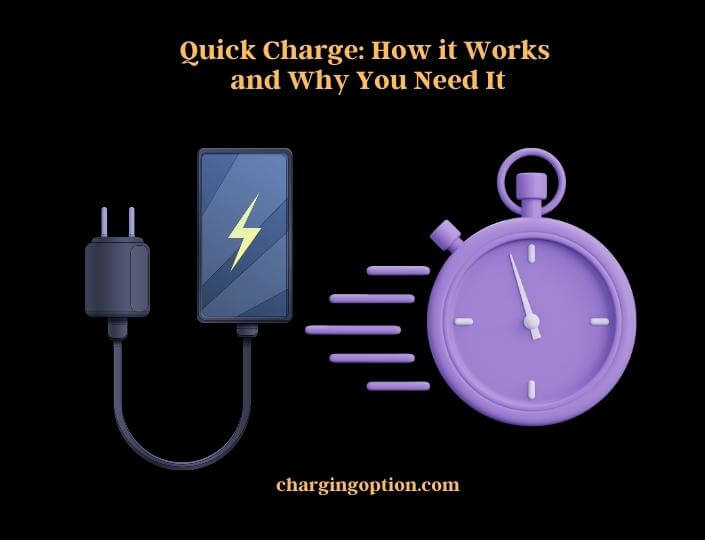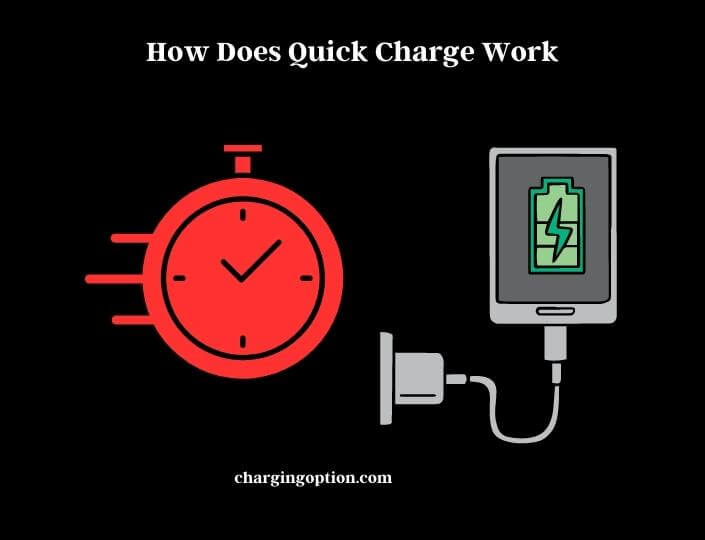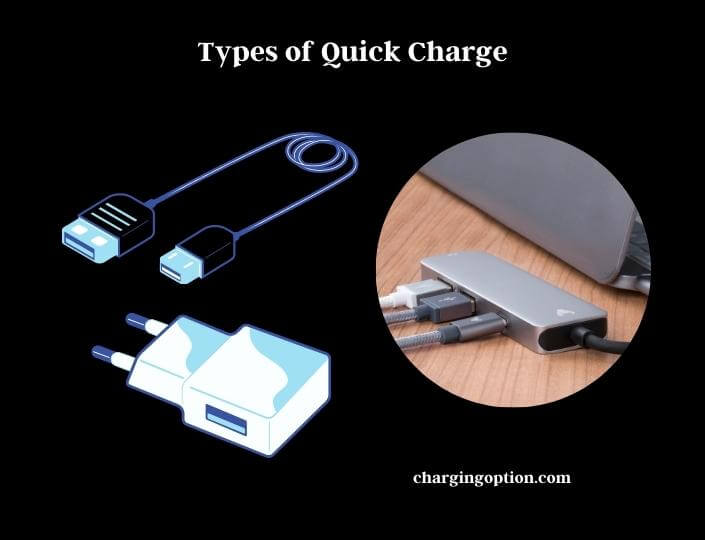Fast charging has become an essential feature for modern-day electronic devices, as we rely heavily on them for communication, entertainment, and productivity. Waiting for hours for a device to charge is no longer acceptable when we have so many things to do in a day. This is where Quick Charge technology comes in.

It has revolutionized the way we charge our devices, allowing us to charge them in a fraction of the time compared to traditional charging methods. Developed by Qualcomm, Quick Charge technology uses advanced charging circuits, algorithms, and communication protocols to optimize the charging process. It detects the type of charger and cable being used and adjusts the voltage and current levels accordingly, providing a fast and efficient charging experience without damaging the battery.
What is Quick Charge
Quick Charge technology uses a combination of specialized charging circuits, algorithms, and communication protocols to optimize the charging process. The technology works by detecting the type of charger and cable being used and adjusting the voltage and current levels accordingly. This allows for faster charging times without damaging the battery.
Compared to traditional charging methods, Quick Charge technology can charge your device up to four times faster. Quick Charge 1.0 offered up to 40% faster charging, while Quick Charge 2.0 and 3.0 offered up to 75% faster charging. Quick Charge 4.0 can charge devices up to 50% in just 15 minutes.
How Does Quick Charge Work
Quick Charge technology works by increasing the charging voltage and/or current that is delivered to a device during charging. This allows more power to be delivered to the battery in a shorter amount of time, resulting in faster charging speeds.
When a device is plugged into a Quick Charge-compatible charger, the charger communicates with the device to determine the maximum charging rate that the device can handle without damaging its battery. Once this is determined, the charger delivers the maximum charging voltage and/or current that the device can handle.

Quick Charge technology uses a higher voltage to charge the battery. This allows more power to be delivered to the battery, resulting in faster charging speeds. However, charging at a higher voltage can also generate more heat, which is why many Quick Charge-compatible devices include advanced thermal management systems to prevent overheating.
Quick Charge technology uses a higher current to charge the battery. This allows more power to be delivered to the battery, resulting in faster charging speeds. However, charging at a higher current can also generate more heat, which is why many Quick Charge-compatible devices include advanced circuitry to regulate the charging current and prevent overheating.
Types of Quick Charge
Quick Charge is a technology that allows mobile devices to charge at a faster rate than traditional charging methods. There are several types of quick charge technologies available, including:
Qualcomm Quick Charge
Developed by Qualcomm, this is one of the most popular quick charge technologies. It uses special circuitry to increase the charging voltage, which in turn increases the charging speed. Qualcomm Quick Charge is available in several versions, with the latest being Quick Charge 5, which can charge a device from 0 to 50% in just 5 minutes.
Power Delivery (PD)
Power Delivery is a fast-charging standard developed by the USB Implementers Forum (USB-IF). It uses higher voltage and current levels to deliver more power to the device, which results in faster charging times. Power Delivery is becoming increasingly popular and is supported by many smartphones, tablets, and laptops.
Adaptive Fast Charging (AFC)
This is Samsung’s fast-charging technology, which works by adjusting the charging voltage and current to optimize charging speed. It is compatible with Samsung Galaxy devices and can charge up to 50% in 30 minutes.
Dash Charge
Dash Charge is a proprietary fast-charging technology developed by OnePlus. It uses a larger charging adapter and cable to deliver more power to the device, resulting in faster charging times. Dash Charge is compatible with select OnePlus devices.

VOOC Flash Charge
VOOC (Voltage Open Loop Multi-step Constant-Current Charging) is Oppo’s proprietary fast-charging technology. It uses a higher charging voltage to deliver faster charging times and can charge a device from 0 to 75% in just 30 minutes. VOOC Flash Charge is available on select Oppo and Realme devices.
Devices that Support Quick Charge
Quick Charge technology is compatible with a wide range of electronic devices, including smartphones, tablets, and other portable devices. To take advantage of Quick Charge, you need a device that supports the technology and the right charging cable and adapter.
Many popular smartphones, including Samsung, LG, Motorola, and HTC, offer Quick Charge support. For example, the Samsung Galaxy S21 Ultra supports Quick Charge 2.0 and 3.0, while the LG V60 ThinQ supports Quick Charge 4.0. Some popular tablets, such as the Microsoft Surface Pro 7, also support Quick Charge technology.
To check if your device supports Quick Charge, look for the Quick Charge logo on the device or in the product specifications. Quick Charge 2.0 and above require a USB Type-C cable, while Quick Charge 1.0 and below use a micro-USB cable. Make sure to purchase a compatible cable and adapter to ensure optimal charging performance.
It’s worth noting that even if your device supports Quick Charge technology, you won’t always see the fastest charging speeds. The charging speed is also affected by factors such as the size of the battery, the temperature of the device, and the amount of power the charger can supply. Nonetheless, having a device that supports Quick Charge technology can significantly reduce charging times and provide a more convenient charging experience.
Benefits of Quick Charge
Quick Charge technology offers several benefits over traditional charging methods. Here are some of the most notable advantages:
Fast Charging
The most obvious benefit of Quick Charge technology is its ability to charge devices faster than traditional charging methods. Quick Charge 3.0 can charge a smartphone from 0% to 80% in just 35 minutes, while Quick Charge 4.0 can charge up to 50% in 15 minutes. This is a significant improvement over the hours required for full charging using older technologies.
Convenience
With Quick Charge technology, you can get a significant amount of battery charge in a shorter amount of time. This can be especially useful when you are in a hurry and need to have your device charged quickly.
Increased Lifespan of Battery
When charging with traditional methods, the heat generated during the charging process can damage the battery over time. Quick Charge technology uses advanced algorithms and communication protocols to optimize the charging process, reducing the heat generated and, in turn, increasing the lifespan of the battery.
Flexibility
Quick Charge technology is backward compatible, meaning that you can use a Quick Charge-enabled charger to charge a non-Quick Charge device. This makes it a convenient option when you need to charge multiple devices and don’t have a compatible charger for each device.
Safety
Quick Charge technology includes safety features to protect your device and battery from overcharging, overheating, and other potential safety hazards. The technology also reduces the risk of damage to your device’s charging port, which can happen when using incompatible chargers.
Limitations of Quick Charge
While Quick Charge technology offers many benefits, there are also some limitations to consider:
Compatibility
Quick Charge technology is proprietary to Qualcomm, which means that only devices with Qualcomm Snapdragon processors can take full advantage of the technology. This limits the number of devices that can benefit from Quick Charge.
Cost
Quick Charge technology requires specialized charging circuitry, which can increase the cost of the device or the charging accessories. As a result, devices with Quick Charge technology may be more expensive than similar devices without it.
Battery Degradation
While Quick Charge technology reduces the heat generated during charging, it still causes some heat. Over time, this heat can contribute to the degradation of the battery, reducing its overall lifespan.
Charging Speeds Vary
The charging speed achieved with Quick Charge technology can vary based on factors such as the device’s battery size, temperature, and charging environment. As a result, the charging speed may not always be as fast as advertised.
Requires Compatible Charger and Cable
To take advantage of Quick Charge technology, you need a compatible charger and cable. Using non-compatible accessories can result in slower charging speeds or even damage to the device.
Conclusion
Quick Charge technology is a fast, convenient, and safe way to charge electronic devices. With its ability to charge devices faster than traditional methods, it offers a significant advantage to users who are always on the go and need to keep their devices charged.
Devices that support Quick Charge technology are becoming more common, and many popular smartphones and tablets now offer the feature. While there are some limitations to consider, such as the cost and compatibility of the technology, the benefits of Quick Charge make it an attractive option for many users.
When looking for a device with Quick Charge technology, it’s essential to ensure that the device is compatible with the charger and cable you plan to use. Choosing a reliable and trustworthy charger and cable will help ensure optimal charging speeds and prolong the lifespan of your device’s battery.
